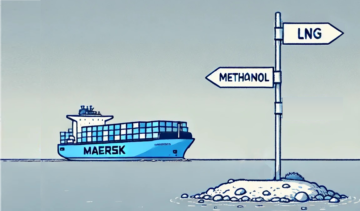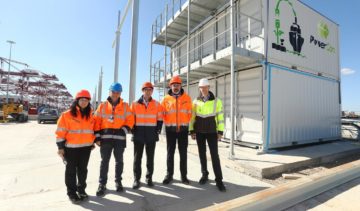Towards net zero emissions by 2050
Introduction
International shipping supports the global economy, transporting approximately the 80% of all global trade from port to port, and emitting substantial amounts of greenhouse gases along the way. Maritime transport emits 1,000 million tons of CO2 per year, which is equivalent to 3% of global CO2 emissions.
At the level of the European Union, maritime transport represents between 3 and 4% of total EU CO2 emissions, or more than 124 million tonnes of CO2 in 2021.
According to the International Maritime Organization, emissions from maritime transport could increase to 50% by mid-century if rigorous measures are not taken. If counted as a country, maritime transport would be among the ten older polluters worldwide.
To play its part in limiting global temperature rise and avoiding the most dangerous impacts of climate change, shipping must achieve net-zero emissions by 2050. And momentum in this direction is growing: the International Maritime Organization (IMO) recently established the goal of reaching zero emissions "by or around" 2050 depending on "national circumstances". Some have criticized the objective of the IMO as ambiguous, vague or "woefully inadequate", in any case the path to meeting even current commitments remains uncertain.
Today, almost all low-carbon fuel sources for shipping are early stage and expensive, and some could even increase emissions if not managed correctly. No clean, commercially viable solution has yet been developed on a large scale.
Given these difficulties, achieving net-zero emissions in shipping in 2050 will require not only stronger commitments, but a revolution in clean fuel technologies, efficient ship design and supporting infrastructure, along with intensive financing to enable this transition.
Why is the decarbonization of maritime transport so important?
Most merchant ships today They run on heavy fuel oil, a thick, tar-like substance that has been used in shipping since the 19th century. Heavy fuel oil has a high energy density, meaning it can power ships long distances with a small amount, and is relatively cheap because it is a byproduct of the oil refining process that produces diesel and gasoline.
But these benefits come at a cost. Heavy fuel oil not only contributes to climate change – shipping is responsible for 3% of all human-caused emissions each year – but it also creates a multitude of environmental and health risks. The sector accounts for 9% of sulfur oxide emissions and 18% of nitrogen oxide emissions annually, harmful air pollutants that affect the respiratory system and cause acid rain. Heavy fuel oil also produces black carbon (soot), which, in addition to darken the surface of the Arctic and amplify global warming, suggests risks to human health, such as heart and lung diseases.
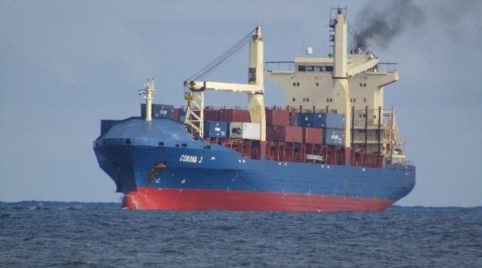
What progress has been made so far?
In 2011, the IMO established minimum energy efficiency requirements for ships, marking the first mandatory greenhouse gas reduction regime in the shipping sector.
Efficiency measures such as slow browsing (reducing the speed of ships), bow bulbs (placed at the front of the boat to reduce drag and increase energy efficiency), and improvements to the propellers and hull have helped reduce the carbon intensity of sailing in more than 30% since 2008.
Using sails to harness the wind can also help reduce fuel consumption even in a 30% when combined with energy-efficient ship designs, such as slimmer hull shapes.
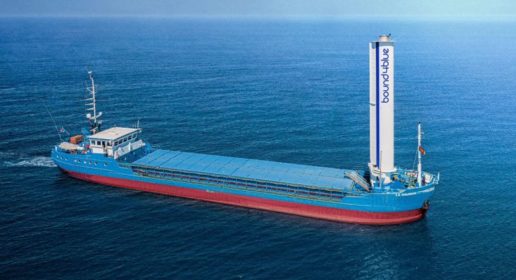
Digitalization is a crucial enabler for the maritime industry to improve Integration and communication between ships, ports and onshore offices enables benefits such as standardisation, better planning and more efficient logistics using fewer energy resources.
These measures, together with those already promoted by the IMO, are of vital importance to achieve decarbonisation objectives, according to the consultancy. DNV The application of energy efficiency measures could reduce emissions from the existing fleet by up to 25%.
Fleet transformation and the introduction of low-carbon or zero-emission fuels will also be needed if the goal of net-zero emissions by 2050 is to be achieved.
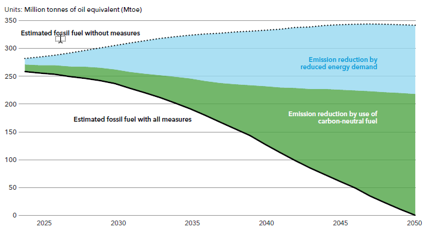
What low carbon fuel options are there and how do they compare to each other?
The estimates suggest that to align with 1.5 degree Celsius trajectories, between 5% and 17% of navigation fuel will need to be zero-emission by 2030, increasing to 84%-93% by 2050. However, currently, fuels zero emissions are very far from meeting these objectives, largely due to its greater economic, technical and infrastructural barriers compared to heavy fuel oil.
Number of test projects in new fuel technologies 2016-2022
Source: International Maritime Organization

Liquefied natural gas is only a temporary solution
Until now, the only commercially viable alternative fuel for shipping is liquefied natural gas (LNG), which has been used for last 12 years. LNG emits approximately a 23% less of carbon dioxide than conventional marine fuels; However, it remains a fossil fuel with a high risk of methane leaks. (Methane is a powerful gas with between 28 and 34 times the heating power of carbon dioxide).
Methane emissions, although they are reduced in two-stroke engines used by large ships, have a greater impact on fast four-stroke engines, as well as in extraction and transportation processes. This means that liquefied natural gas is considered today as a transition alternative: the most efficient today but not the long-term solution.
Some voices are against this transitional use, which could mean significant financial losses if the industry
abandons this fuel in 2030 with the consequent loss of value in ships and supply assets.
Others, on the other hand, believe that it is better to start reducing emissions today than to wait for new fuels and technologies that will take time to reach the market, so part ofthe sector has adopted LNG quickly, understanding that these vessels can use sustainable gases of biological or renewable origin while improvements in engines will reduce methane emissions in the future.
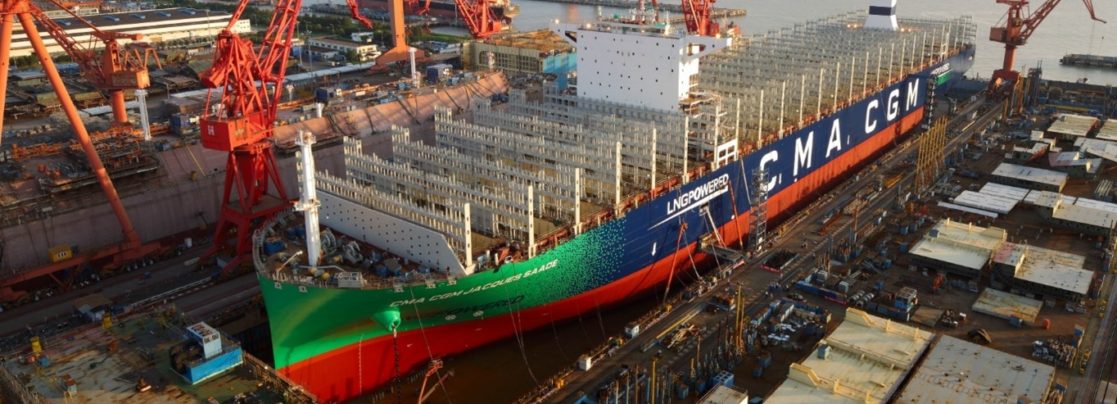
Methanol, a versatile fuel that can be used in existing engines with minimal modifications
The industry giant Maersk is already investing in "green" methanol, a climate-neutral fuel made from captured carbon dioxide and clean hydrogen (hydrogen produced using renewable energy with low or no emissions).
Methanol can already be used in existing ships since it can be stored as a liquid at atmospheric temperature, and the storage facilitieseither They are available in 88 of the 100 largest ports in the world.
However, the biggest obstacle for green methanol is obtaining its
ingredients. The infrastructure to capture carbon dioxide and obtain
Hydrogen using renewable resources is not yet available on a large scale, leading to high costs. Unless incentives for growth are implemented, experts suggest that other, more profitable fuels are likely to dominate the future market.
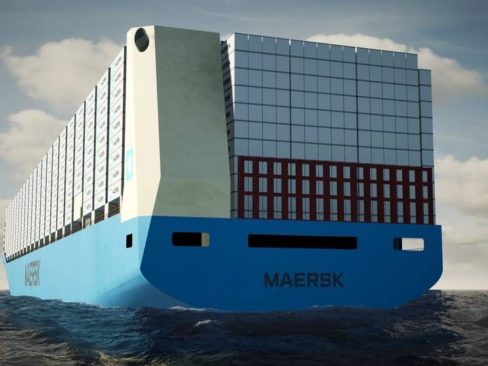
Ammonia and hydrogen are the best fuels in the long term, but will take longer to expand on a large scale
The ammonia —a renewable fuel composed of nitrogen and hydrogen— is currently one of the most promising solutions as it emits almost no carbon dioxide, has a high energy density and is relatively cheap compared to other zero-emission fuels.
However, using ammonia as a boating fuel involves security risks, mostly toxicity. Personnel on board and ashore must receive special training and wear protective equipment, and vessels must be designed to a high level of safety to reduce the likelihood of leaks. This, along with the need to increase green hydrogen production, makes ammonia more expensive than traditional fuels.
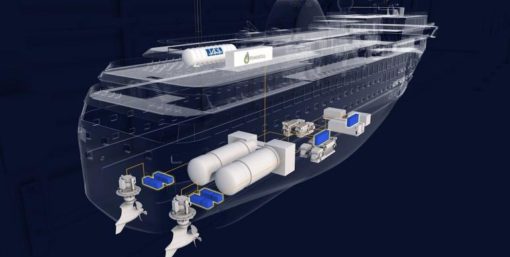
The hydrogen as a fuel is also increasingly perceived as an important solution for the decarbonization of maritime transport. If produced using renewable energy sources, hydrogen fuel burns with zero carbon emissions and water as the only byproduct. Additionally, it has approximately three times the energy density of heavy fuel oil and is non-toxic.
However, hydrogen is a flammable and easily diffusible gas; To use it as fuel, crews must receive special training and ships would need to implement a expensive infrastructure to store hydrogen to cryogenic temperatures of -253 degrees Celsius (-423 degrees Fahrenheit) through pressurization.
These safety concerns, as well as high adaptation and operation costs, are barriers to implementation shared with ammonia.
Biofuels, a renewable alternative with great potential
The biofuels They are being explored as alternatives to heavy fuel oil and are already being used on a limited basis when blended with other marine fuels.
Biofuels, which are produced by converting biomass such as vegetable oils or animal fats into fuel, can be renewable and have low carbon emissions. However, their sustainability depends on the type of biomass and animal raw materials used to produce them. There are also complications ethics in the cultivation of resources for biomass where food could be grown instead.
Significant environmental and economic barriers limit the wide-scale adoption of biofuels, but there is a increasing research on how they can help accelerate the transition to low carbon emissions.

Ships may use renewable electricity
In addition to their use in port connection (OPS) - already planned in Europe for 2030 on container ships, ferries and cruise ships - electric battery packs are another zero-emission option for the maritime industry.
While electrically powered navigation options are only realistic for short distance transport or small domestic ferries, the possibility of hybridization as an alternative that also reduces emissions during port entry or exit maneuvers as a promising solution.

What needs to be done to achieve net zero emissions in shipping?
There's no way around it: before the shipping industry can transition to zero-emission fuels, renewable energy generation must increase.
Producing fuels such as hydrogen, ammonia and methanol requires considerable amounts of energy, meaning that these fuels can only mitigate total emissions if that production energy is also decarbonised. For example, the main production of hydrogen is by transformation of natural gas, which leads to significant greenhouse gas emissions and compromises its potential as a zero-emission solution.
In 2023 only the 30% of the world's energy is produced using renewable sources. Although the clean energy transition is gaining momentum, is a big challenge that industry can produce enough zero-emission fuel to meet net zero targets by 2050 unless countries rapidly increase investment and deployment of renewable energy.
To truly align with the goals of the Paris Agreement, the shipping industry will also need stronger commitments than those set out by the IMO 2023 strategy.
This presents an important opportunity for shipping companies, national governments and other key actors to demonstrate leadership on this issue.
The European Union leads decarbonization initiatives globally as part of its Green Strategy. Specifically, the package of measures called Fit for 55 includes key measures to drive the decarbonization of the sector.
Spain, for its part, contributes to the development of European measures with public and private initiatives such as those reported in the National Action Framework (MAN) being one of the most competitive countries on the path to decarbonisation of the maritime and port sector.

